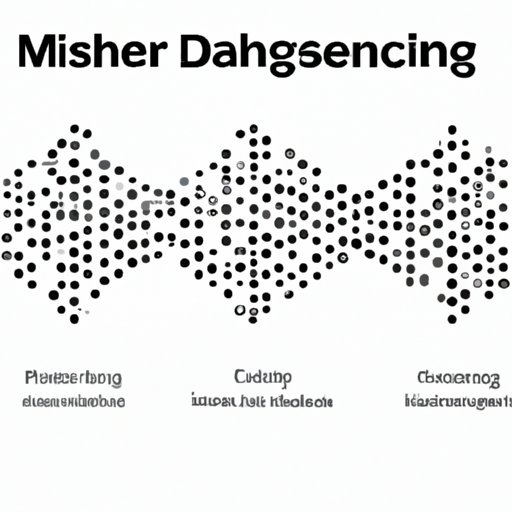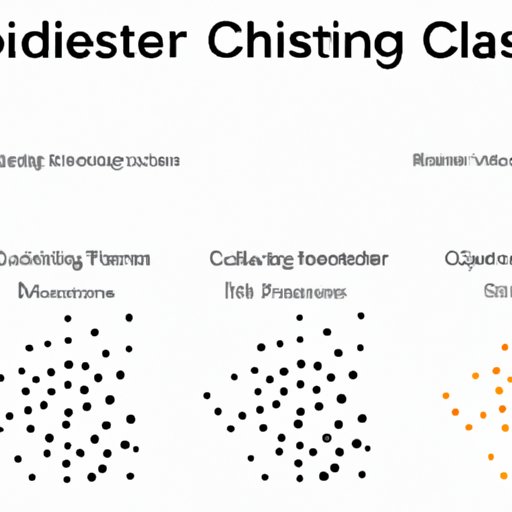
Introduction to Clustering in Data Science
Clustering is one of the most important techniques used in data science. It involves grouping records into clusters or categories based on their similarities. This allows data scientists to better understand and make sense of large datasets. By using clustering, data scientists can uncover hidden patterns, relationships, and insights that would otherwise remain hidden. In this article, we will explore what clustering is in data science, the benefits it provides, and how it is used to uncover patterns and insights.
Definition of Clustering
Clustering is the process of dividing a set of data points into clusters such that points in the same cluster have similar properties. It is an unsupervised learning technique, meaning that it does not require labeled data. Clustering is used to group data points with similar characteristics together and separate them from other data points with different characteristics. For example, in healthcare, clustering can be used to group patients with similar symptoms into the same cluster.
Overview of Clustering Techniques
There are several different types of clustering techniques, including hierarchical clustering, k-means clustering, fuzzy clustering, and graph-based clustering. Each technique has its own advantages and disadvantages and is best suited for different use cases. Hierarchical clustering is used to identify and visualize clusters in data, while k-means clustering is used to partition data into k distinct clusters. Fuzzy clustering is used to assign each data point to more than one cluster, while graph-based clustering is used to find communities in social networks.
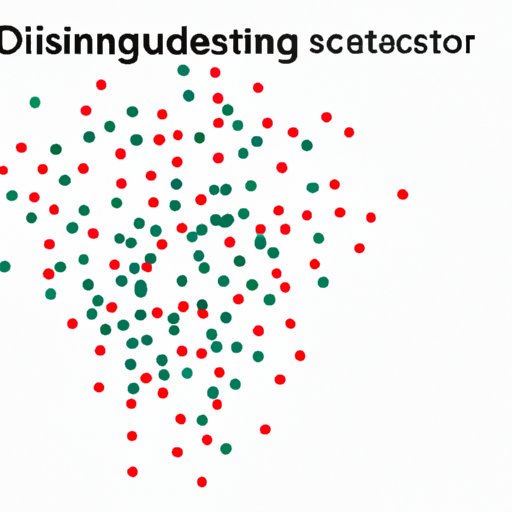
Exploring the Benefits of Clustering for Data Science
Clustering is an invaluable tool for data scientists. It provides numerous benefits, including increased accuracy in predictive modeling, improved understanding of data, and enhanced knowledge discovery. Let’s take a closer look at these benefits.
Increased Accuracy in Predictive Modeling
Clustering can be used to improve the accuracy of predictive models by identifying meaningful patterns in data. According to a study by researchers at the University of California, Berkeley, clustering can improve the accuracy of predictive models by up to 15%. This is because clustering can help reduce noise in data, making it easier for predictive models to identify meaningful patterns.
Improved Understanding of Data
Clustering can also be used to gain a better understanding of data. By grouping data points into clusters, data scientists can identify relationships between variables and gain insights that would otherwise remain hidden. For example, clustering can be used to identify customer segments, which can then be used to inform marketing campaigns and product development.
Enhanced Knowledge Discovery
Clustering can also be used to enhance knowledge discovery. By identifying patterns in data, data scientists can uncover deeper insights and uncover new opportunities. This can help organizations make better decisions and stay ahead of their competition.
Using Clustering to Uncover Patterns and Insights
Clustering can be used to uncover patterns and insights in data. By applying clustering algorithms, data scientists can identify relationships between variables, discover hidden groups, and detect outliers. Let’s take a closer look at each of these uses.
Identifying Relationships between Variables
Clustering can be used to identify relationships between variables. By grouping data points into clusters, data scientists can identify correlations between variables that would otherwise remain hidden. This can be used to identify potential causes of certain effects and draw conclusions about how different variables interact with each other.
Discovering Hidden Groups
Clustering can also be used to discover hidden groups in data. By grouping data points into clusters, data scientists can identify subgroups or classes within a dataset. This can be used to gain insights into customer behavior or uncover new market opportunities.
Detecting Outliers
Clustering can also be used to detect outliers in data. By grouping data points into clusters, data scientists can easily identify data points that do not belong to any cluster. This can be used to identify anomalies in data and uncover hidden trends.
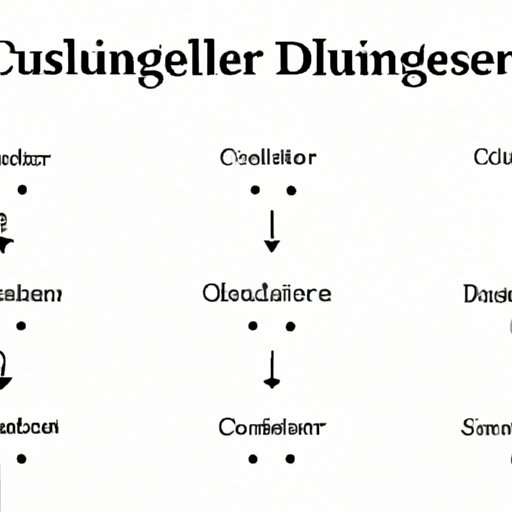
A Guide to Implementing Clustering Algorithms in Data Science
Once data scientists have identified the benefits of clustering, they need to know how to implement clustering algorithms in data science. There are several steps involved in implementing clustering algorithms, including preparing data for clustering, choosing an appropriate clustering algorithm, and evaluating the results of clustering. Let’s take a closer look at each of these steps.
Steps for Preparing Data for Clustering
The first step in implementing clustering algorithms is to prepare the data for clustering. This includes cleaning the data, transforming the data, and selecting the appropriate features for clustering. Cleaning the data involves removing any invalid or missing values, while transforming the data involves scaling the data so that all features are on the same scale. Finally, selecting the appropriate features for clustering involves identifying the features that are most relevant to the problem at hand.
Choosing an Appropriate Clustering Algorithm
Once the data is prepared, the next step is to choose an appropriate clustering algorithm. This depends on the type of data being clustered, the desired outcome, and the available resources. Some popular clustering algorithms include k-means clustering, hierarchical clustering, and graph-based clustering.
Evaluating Results of Clustering
The final step in implementing clustering algorithms is to evaluate the results of clustering. This involves assessing the accuracy of the clusters, measuring the quality of the clusters, and determining whether the clusters are meaningful. The accuracy of the clusters can be assessed by calculating the intra-cluster distance, while the quality of the clusters can be measured by calculating the inter-cluster distance. Finally, the clusters can be evaluated to determine whether they are meaningful by examining the relationships between the variables.
Understanding How Clustering is Used in Machine Learning
Clustering is also used in machine learning. It is used to group data points into clusters and then use those clusters to classify new data points. There are two types of clustering-based machine learning: supervised and unsupervised. Supervised clustering is used to classify data points into predefined clusters, while unsupervised clustering is used to group data points into clusters without any prior knowledge of the data.
Types of Clustering-Based Machine Learning
Supervised clustering is used when the data points are labeled and the goal is to classify them into predefined clusters. This is commonly used in image classification and text classification tasks. Unsupervised clustering is used when the data points are unlabeled and the goal is to group them into clusters without any prior knowledge of the data. This is commonly used in anomaly detection and recommendation systems.
Applications of Clustering in Machine Learning
Clustering is used in a variety of machine learning applications, including fraud detection, customer segmentation, object recognition, sentiment analysis, and recommendation systems. By grouping data points into clusters, machine learning algorithms can more accurately identify patterns and make predictions.
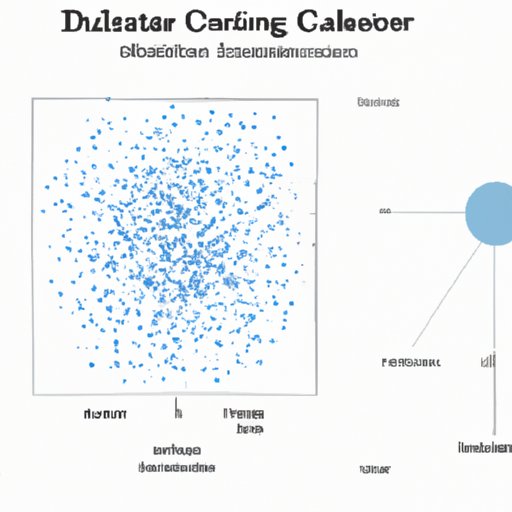
Analyzing Clustering Techniques and Their Applications in Data Science
Now that we’ve explored the basics of clustering, let’s take a closer look at some of the most popular clustering algorithms and their applications in data science.
Popular Clustering Algorithms
K-means clustering is one of the most popular clustering algorithms. It is used to partition data into k distinct clusters. It works by minimizing the within-cluster variance. Hierarchical clustering is another popular clustering algorithm. It is used to identify and visualize clusters in data. It works by creating a hierarchy of clusters based on similarity. Other popular clustering algorithms include spectral clustering, density-based clustering, and graph-based clustering.
Examples of Clustering in Data Science
Clustering is used in a variety of data science applications, including customer segmentation, document clustering, market segmentation, and image recognition. By grouping data points into clusters, data scientists can gain insights into customer behavior, uncover hidden trends, and identify potential markets.
Challenges of Clustering in Data Science
Clustering is not without its challenges. One of the biggest challenges is selecting the appropriate clustering algorithm. Different algorithms work better for different datasets, so data scientists need to be aware of the strengths and weaknesses of each algorithm. Additionally, clustering can be computationally expensive, so data scientists need to be mindful of the resources available. Finally, clustering algorithms can be sensitive to outliers, so data scientists need to be aware of how to handle outliers in their data.
Conclusion
Clustering is an essential technique used in data science. It can be used to uncover patterns and insights in data, improve the accuracy of predictive models, and gain a better understanding of data. It is also used in machine learning to group data points into clusters and then use those clusters to classify new data points. Popular clustering algorithms include k-means clustering, hierarchical clustering, and graph-based clustering. Clustering is used in a variety of data science applications, including customer segmentation, document clustering, market segmentation, and image recognition. Despite its many benefits, clustering is not without its challenges. Data scientists need to be aware of the strengths and weaknesses of each algorithm and be mindful of the resources available.
Summary of Clustering in Data Science
Clustering is an important technique used in data science. It involves grouping data points into clusters based on their similarities. This allows data scientists to uncover hidden patterns and insights that would otherwise remain hidden. Clustering can be used to improve the accuracy of predictive models, gain a better understanding of data, and enhance knowledge discovery. It is also used in machine learning to group data points into clusters and then use those clusters to classify new data points. Popular clustering algorithms include k-means clustering, hierarchical clustering, and graph-based clustering. Despite its many benefits, clustering is not without its challenges. Data scientists need to be aware of the strengths and weaknesses of each algorithm and be mindful of the resources available.
Benefits of Clustering for Data Science
Clustering is an invaluable tool for data scientists. It provides numerous benefits, including increased accuracy in predictive modeling, improved understanding of data, and enhanced knowledge discovery. By using clustering, data scientists can uncover hidden patterns, relationships, and insights that would otherwise remain hidden. This can help organizations make better decisions and stay ahead of their competition.
(Note: Is this article not meeting your expectations? Do you have knowledge or insights to share? Unlock new opportunities and expand your reach by joining our authors team. Click Registration to join us and share your expertise with our readers.)
